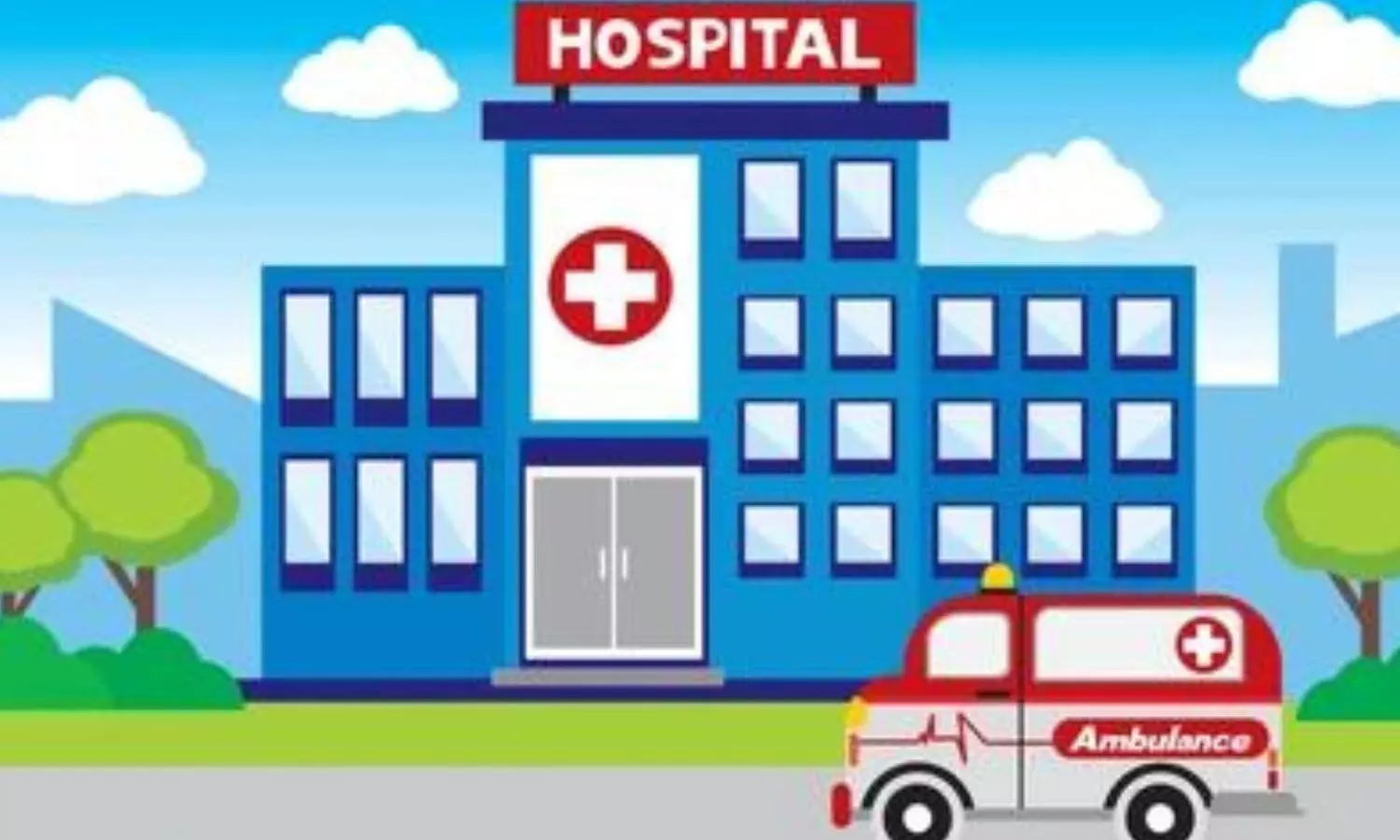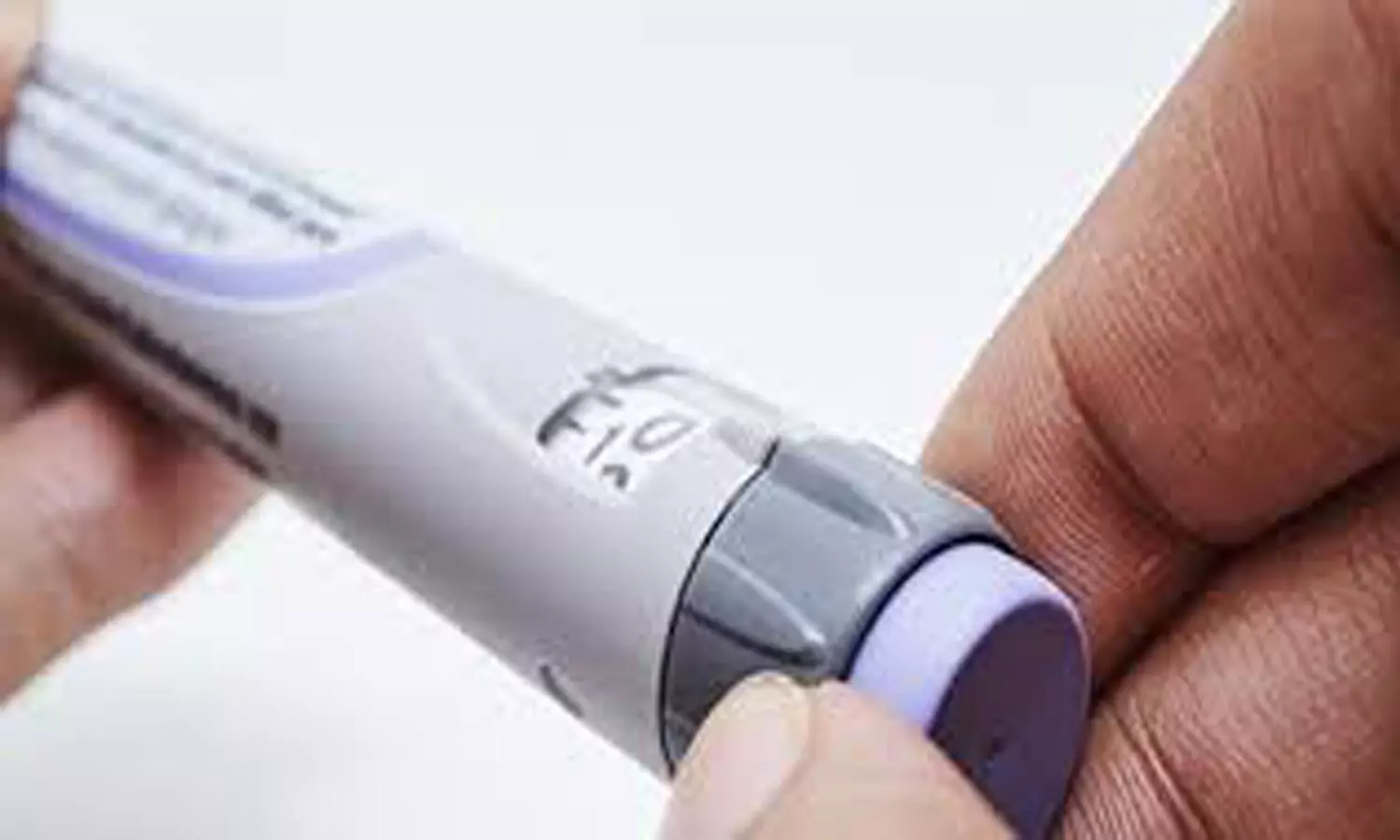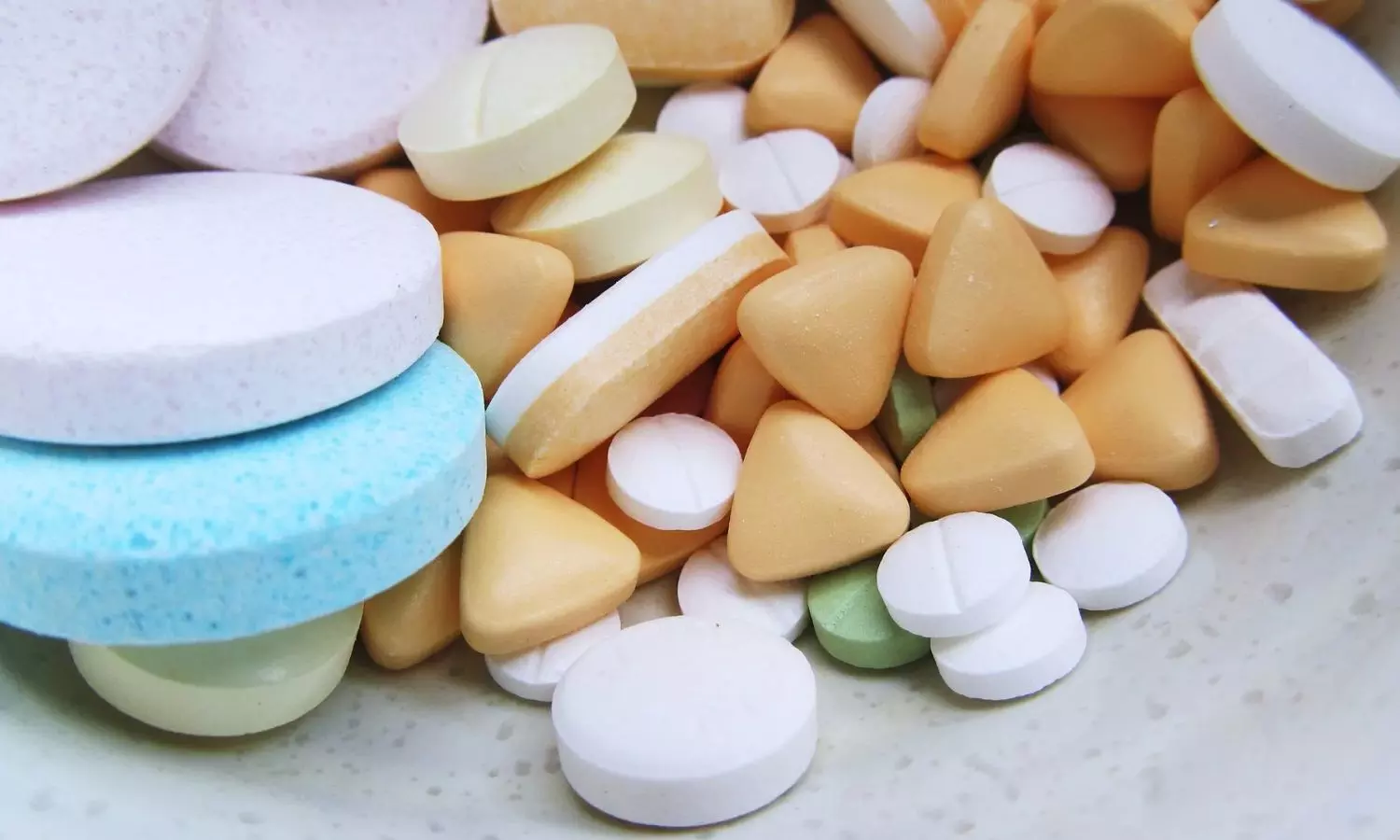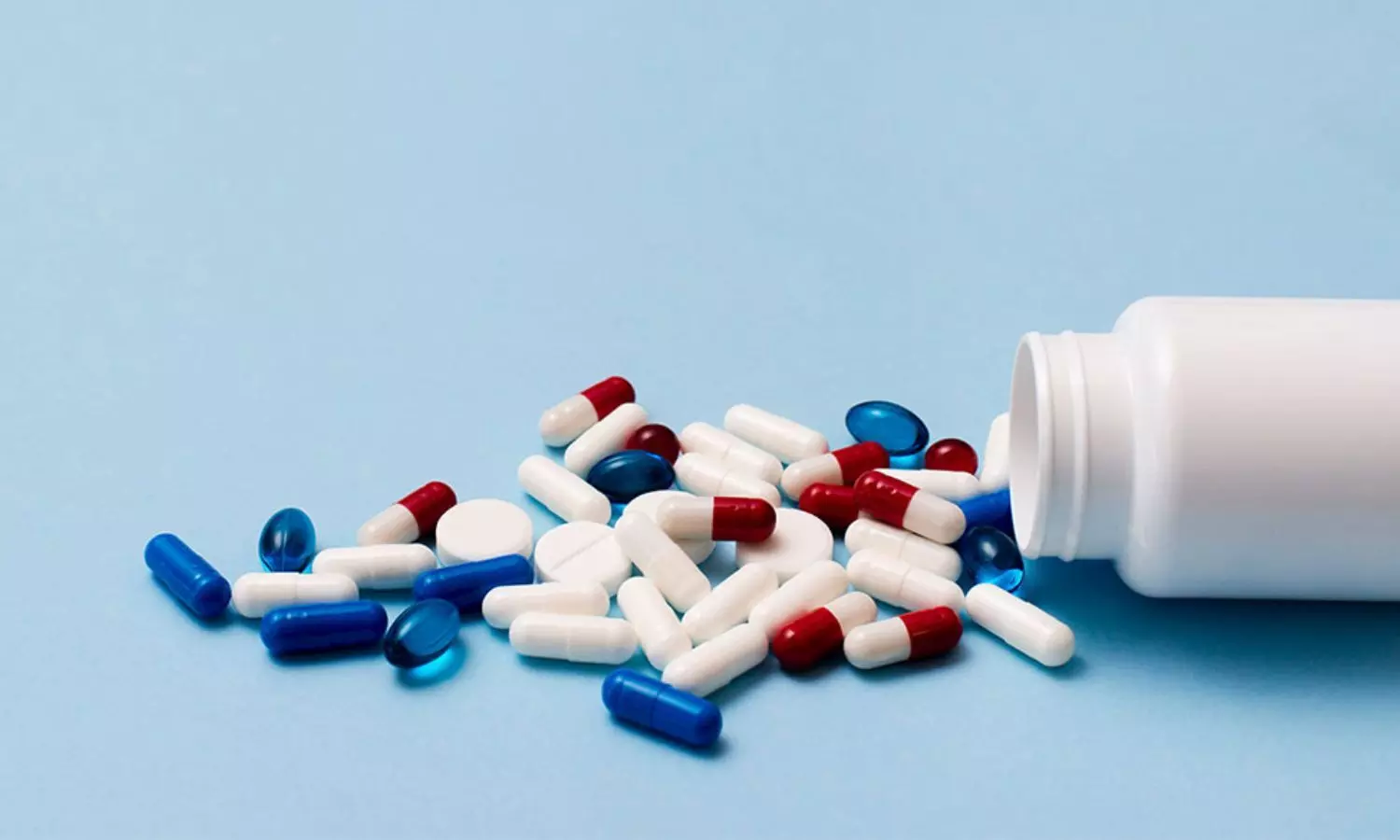Conversations starters to help youth manage emotions that come with sports and competition
Powered by WPeMatico
Powered by WPeMatico
Powered by WPeMatico
Powered by WPeMatico

Madurai: Five years after Prime Minister Narendra Modi laid
the foundation stone for the All India Institute of Medical Sciences (AIIMS) in
2019, construction has officially commenced at Thoppur. This milestone follows
the recent environmental clearance granted by the State Environmental Impact
Assessment Authority (SEIAA), according to AIIMS Madurai officials.
The entire
project is expected to be completed within 33 months and the first phase of construction will be completed in 18 months.
The initiation of construction comes amid ongoing
disputes between the Dravida Munnetra Kazhagam (DMK) and its alliance parties,
and the Bharatiya Janata Party (BJP)-led Union government over the delayed
progress of the project. The construction began with a ceremonial event
attended by key officials from AIIMS and Larsen & Toubro (L&T), the
construction firm responsible for the project, reports Times of India.
“Phase one, which includes a medical college, hostels, inpatient department (IPD), outpatient
department (OPD), emergency block, and other essential services, is projected
to be completed within 18 months, with the entire project expected to be
finished in 33 months,” the statement read.
Spanning a vast built-up area of 231,782 square
meters, the project includes 42 blocks. AIIMS Madurai will feature 900 beds,
including a specialized 150-bed block dedicated to infectious diseases and a
30-bed Ayush block. The Ayush block will integrate Ayurveda, yoga, Unani, Siddha, and Homeopathy with mainstream medical care. Dr M Hanumantha Rao, the executive director of
AIIMS Madurai, emphasized that the institute is part of the prestigious AIIMS
network, aimed at delivering high-standard healthcare, comprehensive medical
education, and cutting-edge research, reports The Daily.
Larsen & Toubro (L&T) was awarded the
letter of acceptance (LoA) by the Ministry of Health and Family Welfare (MoHFW)
on Mar 4. “L&T emerged as the lowest bidder and received the contract
for building construction and site development, valued at 1,118.35 crore. The
total project cost of AIIMS Madurai has also increased from 1,977.8 crore to
2,021.51 crore,” the statement added.
Despite the excitement surrounding the
commencement of construction, students have had concerns. Three
batches of MBBS students have already been admitted to AIIMS Madurai, which has
been temporarily operating from the buildings of Ramanathapuram Government Medical College. These students have recently raised issues about the
inadequate infrastructure that does not meet the standards of a national
institution.
This move will provide the students with a
state-of-the-art learning environment that aligns with the institution’s
national reputation.
A dedicated block for infectious
diseases and the Ayush block highlights the comprehensive approach to
healthcare, blending traditional and modern practices. As construction
progresses, AIIMS Madurai is set to become a cornerstone of the region’s medical education
and healthcare services, addressing both current needs and future
demands.
Also Read: AIIMS Madurai Construction: L&T wins order to build 720-bed hospital
Powered by WPeMatico

USA: In a comprehensive retrospective analysis published in Diabetes Spectrum, researchers have delved into the dosing frequency of Insulin Glargine, a widely used long-acting insulin analog, in noncritically ill individuals. The study provides valuable insights into optimizing insulin therapy regimens for patients managing diabetes.
The researchers found no significant differences in safety or efficacy between once-daily and twice-daily insulin glargine in the noncritically ill population. They stressed conducting a larger prospective study to confirm these results.
Diabetes, a chronic metabolic disorder affecting millions worldwide, necessitates meticulous management to prevent complications and maintain optimal blood glucose levels. Insulin is the treatment of choice for diabetes care in the hospital. Insulin Glargine, a basal insulin analog, is commonly prescribed to achieve glycemic control in individuals with type 1 and type 2 diabetes. However, the optimal dosing frequency of Insulin Glargine remains a subject of debate among healthcare providers.
Against the above background, Jennifer Clements, University of South Carolina College of Pharmacy, Greenville, SC, and colleagues aimed to evaluate the safety and efficacy of insulin glargine administered as a once-daily versus twice-daily regimen in the noncritically ill population in a pilot study.
For this purpose, they conducted a retrospective chart review from 2020 to 2021. Inclusion criteria were on a regimen of either once-daily or twice-daily insulin glargine for ≥72 hours during the specified time frame and age ≥18 years.
The primary endpoint was comparing the number of days with all blood glucose measurements within the 70–180 mg/dL range throughout 24 hours. Secondary endpoints included the number of hypoglycemic (<70 mg/dL) and hyperglycemic (>180 mg/dL) events that occurred in each study group.
The following were the key findings of the study:
“There were no significant differences in safety or efficacy between once-daily and twice-daily insulin glargine in the noncritically ill population,” the researchers wrote. “A larger prospective study could confirm these results.”
In conclusion, the retrospective analysis provides valuable insights into the dosing frequency of Insulin Glargine in noncritically ill individuals. By challenging conventional beliefs and highlighting comparable efficacy and safety outcomes between once-daily and twice-daily dosing regimens, the study empowers healthcare providers to individualize insulin therapy and optimize outcomes for patients managing diabetes.
Reference:
Deasiah Hogue, Jennifer Clements, Adrienne Wright; Retrospective Analysis of Once-Daily Versus Twice-Daily Insulin Glargine Dosing in Noncritically Ill Individuals. Diabetes Spectr 15 May 2024; 37 (2): 149–152. https://doi.org/10.2337/ds23-0029
Powered by WPeMatico

Israel: A recent study, DEA-HF, has provided valuable insights into the efficacy of different diuretic regimens for managing congestion in ambulatory patients with heart failure. This intra-patient comparison sheds light on optimal strategies for diuresis, aiming to improve outcomes and quality of life for individuals with this chronic condition.
The study published in JACC: Heart Failure revealed a significantly higher natriuresis with furosemide plus metolazone in ambulatory chronic heart failure (CHF) patients compared to intravenous (IV) furosemide alone or furosemide plus acetazolamide.
The use of IV furosemide plus the thiazide-like diuretic metolazone also led to greater body weight and urine volume reductions compared to other diuretic regimens.
The findings, also presented at the European Society of Cardiology Heart Failure 2024 Congress, should help direct the diuretics use in patients with severe chronic HF experiencing refractory congestion. According to the researchers, the study provides some of the first data on the best diuretic strategy for those with chronic HF.
Heart failure, a chronic and progressive condition characterized by the heart’s inability to pump blood effectively, often leads to fluid retention and congestion, resulting in symptoms such as dyspnea, fatigue, and edema. Diuretic therapy is central to managing congestion and alleviating symptoms in heart failure patients.
Limited evidence exists regarding the safety and efficacy of diuretic regimens in ambulatory, congestion-refractory, chronic heart failure patients. To fill this knowledge gap, Aharon (Ronnie) Abbo, Department of Cardiology, and the Rambam Health Care Campus, Haifa, Israel, and colleagues aimed to compare the potency and safety of commonly used diuretic regimens in CHF patients.
For this purpose, the researchers conducted a prospective, randomized, open-label, crossover study in NYHA class II-IV CHF patients, treated in an ambulatory day-care unit. Each patient received three different diuretic regimens: IV furosemide 250mg; IV furosemide 250mg plus oral metolazone 5mg; and IV furosemide 250mg plus IV acetazolamide 500mg. Treatment was administered once a week, in one of six randomized sequences.
The study’s primary endpoint was total sodium excretion, and the secondary was total urinary volume excreted, measured for 6 hours post-treatment initiation. Forty-two patients were recruited.
The study led to the following findings:
“Furosemide plus metolazone resulted in a significantly higher natriuresis than IV furosemide alone or furosemide plus acetazolamide in ambulatory CHF patients,” the researchers wrote.
As the prevalence of heart failure continues to rise globally, studies like DEA-HF play a critical role in advancing evidence-based approaches to disease management. By refining treatment strategies and addressing key therapeutic challenges, such as congestion management, healthcare providers can better meet the needs of heart failure patients and improve long-term outcomes.
Reference:
Abbo A, Gruber A, Volis I, et al. Diuresis efficacy in ambulatory congested heart failure patients: intra-patient comparison of three diuretic regimens (DEA-HF). JACC Heart Fail. 2024;Epub ahead of print.
Powered by WPeMatico

Uttar Pradesh- Atal Bihari Vajpayee Medical University (ABVMU) is going to hold the Common Nursing Entrance Test (CNET) for admission to M.Sc. Nursing, Nurse practitioner in critical care- NPCC Course (2 years) for the Academic Session 2024-25 for all Government/Private Nursing Colleges Affiliated To ABVMU and SGPGIMS Lucknow, KGMU Lucknow and LLRM Meerut.
All admissions to M.Sc. Nursing, NPCC Course (2 years) in the above-mentioned institutes/universities for the academic session 2024-25 will be done through this Common Nursing Entrance Test (CNET) only. On this, ABVMU has released the information brochure detailing the course.
As per the information brochure, online application forms for CNET for admission to the M.Sc. Nursing, NPCC Course (2 years) for the academic session 2024-25 is already available on the ABVMU official website. The application form should be filled only through online mode whereas no application form will be received through post or any other medium. Furthermore, only completely filled and submitted application forms will be accepted.
The CNET will be conducted in offline mode and bilingual (English and Hindi) in 19 cities across India.
IMPORTANT DATES
|
S.NO |
PARTICULARS |
DATES |
|
1 |
Application form Available (Online). |
25th April 2024 (Thursday). |
|
2 |
Last Date of Application. |
29th May 2024 – 6:00 PM (Wednesday). |
|
3 |
Admit card will be available online. |
5th June 2024 (Wednesday). |
|
4 |
Entrance Examination. |
14th June 2024 (Friday). 11:00 AM to 2:20 PM (200 Minutes). |
|
5 |
Place of Examination. |
To be intimated on Admit Card. |
|
6 |
Date of Result Declaration. |
To be announced on the website. |
EXAMINATION FEES
1 Candidates for the entrance test will have to pay a fee of Rs. 3000/- for Unreserved/Other Backward Classes (UR/OBC) and Rs. 2000/- for SC/ST/PwD.
2 Examination Fee shall be submitted online after successful online registration of the candidate.
3 Once the fee has been submitted there shall be no refund of fee and it is non-transferable for any other examination.
ADMISSION
1 The selection and allotment of the college shall be Strictly done based on M.Sc. Nursing/NPCC Course Common Entrance Test-2024 merit list through counselling only.
2 The candidate, who has qualified for the admission to the M.Sc. Nursing/NPCC Course shall deposit the prescribed fee on the date notified for that purpose by the University. Those who fail to do so will lose their claim for admission to the course.
3 Candidates shall join the course within the specified period.
ELIGIBILITY CRITERIA
AGE
The minimum age for admission is 17 years on or before 31st December 2024.
MINIMUM QUALIFICATIONS FOR ADMISSION FOR MSc NURSING ARE AS PER INC REGULATIONS
1 The candidate should be a Registered Nurse and Registered midwife or equivalent with the State Nursing Registration Council of Uttar Pradesh state (UP Nurses and Midwives Council).
2 If the candidate is a Registered Nurse and Registered midwife or equivalent with any State Nursing Registration Council outside Uttar Pradesh state, they will be eligible if their institution/college is recognised by the Indian Nursing Council.
3 The Minimum education requirements shall be the passing of a B.Sc. Nursing/B.Sc. Hons. Nursing/Post Basic B.Sc. Nursing with a minimum of 55% aggregate marks.
4 Minimum one year of work experience after Basic B.Sc. Nursing.
5 Minimum one year of work experience prior to or after Post Basic B.Sc. Nursing.
MINIMUM QUALIFICATIONS FOR ADMISSION TO NURSE PRACTITIONER IN CRITICAL CARE (NPCC) NURSING COURSE
1 The candidate should be a Registered Nurse and Registered midwife or equivalent with the State Nursing Registration Council of Uttar Pradesh state (UP Nurses and Midwives Council).
2 If the candidate is a Registered Nurse and Registered midwife or equivalent with any State Nursing Registration Council outside Uttar Pradesh state, they will be eligible if their institution/college is recognised by the Indian Nursing Council.
3 The Minimum education requirements shall be the passing of B.Sc. Nursing/B.Sc. Hons. Nursing/Post Basic B.Sc. Nursing with a minimum of 55% aggregate marks.
4 Minimum one year of clinical experience after Basic B.Sc. Nursing preferably in any critical care setting.
5 Minimum one year of clinical experience prior to or after Post Basic B.Sc. Nursing preferably in any critical care setting.
RESERVATION POLICY
1 Reservation as per the State Government under the reservation policy and within the sanctioned number of seats by the Indian Nursing Council (INC) / State Government and not above it.
2. Any change in reservation policy will be followed as per the Uttar Pradesh State Government directives.
3. Reservation for disability (PH): 5% Horizontal reservation will be considered for disabled candidates with a disability of loco-motor to the tune of 40% to 50% of the lower extremities and other eligibility criteria with regard to qualification will be the same as prescribed for Unreserved (UR) category candidates.
4 Caste Certificates issued ONLY by the competent authority (Tehsildar/SDM) of the Uttar Pradesh Government are acceptable. These certificates should be verifiable online through an official Government Portal/Website.
5. EWS quota of 10% may be admissible as per directives of the U.P. Government from time to time. A valid certificate issued by a competent authority (Tehsildar/SDM) of the Uttar Pradesh Government shall be required for counselling. These certificates should be verifiable online through an official Government Portal/Website.
6. A valid OBC certificate issued only on or after 1st April 2024 will be acceptable.
7. A valid EWS certificate issued only on or after 1st April 2024 will be acceptable.
8. A dependent Freedom Fighter certificate issued from the District Magistrate will be acceptable.
9. A valid Ex-Servicemen certificate issued from a competent authority will be acceptable.
10. Valid NCC certificate “C certificate with grade B” issued by the authorised battalion on the prescribed format for NCC will be acceptable.
IMPORTANT POINTS
1 PwD candidates taking admission will be examined by a medical examination board constituted by the Government Medical Colleges/ Institutions with a Nursing Expert for verification of the disability of loco-motor to the tune of 40-50% of the lower limb.
2 For admission to Government Nursing colleges, the candidate must be a domicile of Uttar Pradesh (The candidate has the Domicile certificate of Uttar Pradesh issued from a competent authority OR the candidate has passed 10th and 12th intermediate (10+2) BOTH board Examinations from Uttar Pradesh).
3 Reservations for Minority Educational Institutions will be as per Govt. of UP norms/ directives.
MINIMUM QUALIFYING MARKS
The minimum qualifying criteria for entrance test to admission to B.Sc. Nursing is as under:
General- 50th percentile
General- PwD- 45th percentile
SC/ST/OBC- 40th percentile
INSTRUCTIONS TO CANDIDATES FOR FILLING ONLINE APPLICATION FORM
1 Candidate must read the instructions for filling out the online application form carefully before filling out the form.
2 Application shall be submitted through the online mode only via the ABVMU official website.
3 No application form shall be received by post or by any other mode.
4 Candidate must provide all correct information in the application form, if any information is found incorrect or wrong at any stage then the candidature /admission will be cancelled.
5 Admission to M.Sc. Nursing/NPCC courses will be done through CNET 2024 only.
6 6 It is hereby informed that if any applicant has provided false information solely to appear in the examination for practice or other purpose, the applicant will be debarred from the Entrance Examination in future.
7 Candidate must ensure that the Email address and mobile numbers provided in the online application form are their own and /or parents/guardians only, as all information/communication will be sent to the registered email address and mobile.
8 Registered credentials (Email/Mobile) and Registration ID will be used for all communications and will be required for obtaining the Admit card, Result, Counselling details, Allotment Letter and Admission etc.
9 Candidate should register from personal email ID and Mobile number only and Registration No. should not be shared with any other person for the security purpose.
10 Candidate should note their Registration ID & login password.
11 University disclaims any liability that may arise to a candidate due to incorrect information provided by him/her in his/her online Application Form.
12 Candidate must check and ensure that all information and details filled in by him/her are correct.
13 No Change in the application form will be possible after final submission.
14 Incomplete applications will be rejected without any further intimation.
15 The examination fee once deposited will not be refunded. The fee will not be carried forward to a future examination.
16 Application once submitted cannot be withdrawn. Candidate must note that mere deduction of fee from the bank account is not proof of fee payment. The payment should be supported by a fee payment receipt.
ADMIT CARD
1 Admit Card will be available online and can be downloaded through the Atal Bihari Vajpayee Medical University, U.P. official website, through individual logins by the candidate using his/her Registered ID Number & Login Password.
2 The candidate has to appear for the Examination at the allotted Centre on the Date and time as indicated in their Admit Card.
3 The candidate should take a coloured printout of the admit card.
4 The candidate may note that the Admit Card will not be sent by post.
5 In no case, the duplicate Admit Card for CNET 2024 would be issued at the Examination Centre.
6 The candidate must not mutilate the Admit Card or change any entry made therein.
7 Candidates are advised to preserve his/her Admit Card in good condition for future reference.
8 Issue of Admit Card, however, shall not necessarily mean acceptance of eligibility which shall be further scrutinised at subsequent stages of the admission process.
9 The candidate will be photographed/video graphed along with their Admit Card at the Examination Centre for verification.
10 Digital format of the Admit Card will not be accepted at the Centre. 4.11 Other instructions for the entrance test will be printed on the admit card and should be strictly adhered to.
Meanwhile, if any candidate indulges in any of the unfair means, before or after the examination, he/she will be considered to have used unfair practices and will be booked under an unfair means case. The candidate will be debarred for 3 years in future and will also be liable to criminal action and/or any other action deemed appropriate. Their result will also be cancelled and will not be declared. Also, the details of counselling will be available on the university website after the declaration of the result.
To view the information brochure, click the link below
Powered by WPeMatico

Mumbai: In response to the growing need for specialized pediatric care, Gleneagles Hospital Mumbai is pleased to announce the expansion of its Bone Marrow Transplant (BMT) program to include dedicated services for pediatric patients.
This initiative aims to provide comprehensive BMT services catering specifically to children, offering renewed hope and advanced treatment options for pediatric hematologic and oncologic conditions.
The addition of Pediatric BMT services builds upon our existing expertise in adult BMT and further underscores our commitment to delivering exceptional healthcare across all age groups.
Also Read:Gleneagles Healthcare rebrands hospital chain as ‘Gleneagles Hospitals’
Dr Ruchira Misra, a distinguished and dedicated pediatric hematologist-oncologist and transplant physician will spearhead this new program. With her extensive experience and compassionate approach to pediatric care, Dr. Misra is poised to make a significant impact on the lives of young patients and their families.
“We are thrilled to introduce Pediatric Bone Marrow Transplant services at Gleneagles Hospital Mumbai,” said Dr Ruchira Misra, Senior Consultant Pediatric hematologist-oncologist and transplant physician. Gleneagles Hospital Mumbai. Pediatric BMTs offer a chance of cure for a number of diseases like relapsed blood cancers, neuroblastomas, thalassemia, sickle cell anemia, Wiskott-Aldrich syndrome, and many more conditions. However, these children require very specialized care during their treatment. Gleneagles Hospital is already renowned for its high standards of care.”
“This expansion represents a pivotal moment for Gleneagles Hospital Mumbai as we broaden our scope to meet the unique healthcare needs of pediatric patients “We are dedicated to providing specialized care and are confident that our pediatric BMT program will make a positive difference in the lives of many families. “Noted by Chief Operating Officer, Gleneagles Healthcare India Dr Vivek Talaulikar.
Medical Dialogues team had earlier reported that Gleneagles Healthcare India, one of India’s leading healthcare providers announced a transformative rebranding initiative across its six hospitals located in Mumbai, Chennai, Bengaluru, and Hyderabad. These hospitals are now unified under the new identity of ‘Gleneagles Hospitals,’ a signature international brand of IHH Healthcare.
Powered by WPeMatico

India: A recent publication in The Lancet has drawn attention to the pervasive issue of look-alike, sound-alike (LASA) drugs in India, shedding light on the potential risks and implications for patient safety within the country’s healthcare system. The study underscores the urgent need for regulatory measures and heightened awareness to mitigate the hazards posed by LASA medications.
LASA drugs, characterized by similar packaging, names, or appearance, pose a significant challenge to medication safety, often leading to medication errors, adverse reactions, and patient harm. In the context of India’s vast and diverse pharmaceutical market, where numerous brands and generic formulations coexist, the prevalence of LASA drugs exacerbates these risks, posing formidable challenges for healthcare providers and patients alike.
In India, poor drug regulation is not a recent problem. The Indian drug market is full of look-alike, sound-alike drugs that have not yet caught the attention of the medical community or the media. The viewpoint by Parth Sharma, Association for Socially Applicable Research (ASAR), Pune, Maharashtra, India, and colleagues highlights the problem of LASA drugs and poor prescription practices, proposes solutions for involving all stakeholders in this unaddressed issue which is a huge public health problem in India.
Poorly trained pharmacists, poor regulatory enforcement, and perverse economic incentives have resulted in unchecked and uncontrolled dispensing of drugs in India. Marketing different drugs with deceptively similar brand names remains a significant problem even in cases where the drugs are of standard quality.
Unfortunately, the problem associated with look-alike, sound-alike drugs has not caught the attention of the Indian media yet and there has been very little research within the medical and scientific communities about this issue and its impact, the study stated.
There are instances of two different drugs having the same name but being manufactured and marketed by different entities. For example, (i) brand name ‘Medzol’ is used for both Pantoprazole and Midazolam; (ii) ‘Medzole’ is used for Metronidazole oral suspension, Albendazole tablets and Itraconazole capsules; (iii) ‘Flucor’ is used for both Fluconazole and a combination of Melitracen and Flupentixol; and (iv) ‘Linamac’ is used for both Linagliptin and Lenalidomide.
LASA drugs may lead to significant medication errors and could quite conceivably lead to harm to the patients. Identical brand names contribute the most to such medication errors. The harm could be unnecessary drug effects and side effects to the progression of the disease that was left untreated due to a medication error.
In low-income and middle-income countries (LMIC) like India, the prevalence of untrained pharmacists also makes LASA drugs a significant public health threat.
“After judicial directions, Indian law now requires the drug regulatory body to review a trademark search report to ensure there are no misleading brand names, before granting marketing authorization for a drug,” the research team wrote. “The existence of countless misleading brand names shows that Central Drugs Standard Control Organisation (CDSCO), India’s drug regulator, is not doing what it is tasked to do.”
The regulator has left it to pharma companies to fight each other in trademark battles to resolve the issue of misleading brand names. The courts have not been consistent in applying clear principles, and often these decisions conflict with the basic principles of trademark law.
As an example, variations of the brand Viagra, like Kamagra and Penagra have been allowed to be used but only after determining that the pills cannot be the same color and shape as the rhomboid-shaped blue Viagra pill, even though the pills are in packaging that does not reveal their color or shape.
The Lancet publication catalyzes action, prompting policymakers, regulatory agencies, and healthcare institutions to prioritize medication safety initiatives and regulatory reforms aimed at curbing the proliferation of LASA drugs in India’s pharmaceutical market. By implementing comprehensive risk mitigation strategies and fostering a culture of medication safety, stakeholders can collectively work towards enhancing the quality and integrity of healthcare delivery in India.
As India continues to grapple with the challenges of medication safety in an increasingly complex healthcare landscape, studies like this provide valuable insights and evidence-based recommendations to inform policy development, clinical practice, and patient advocacy efforts, ultimately safeguarding the health and well-being of individuals.
Reference:
Neelakantan, M., Sharma, P., & Kulkarni, A. (2024). Look-alike, sound-alike (LASA) drugs in India. The Lancet Regional Health – Southeast Asia, 26, 100425. https://doi.org/10.1016/j.lansea.2024.100425
Powered by WPeMatico

USA: The choice between different diuretics for the management of hypertension has long been a subject of debate among healthcare professionals. A recent landmark study, known as the Diuretic Comparison Project (DCP), has brought new insights into this matter by comparing the renal outcomes of two commonly prescribed diuretics: chlorthalidone and hydrochlorothiazide.
The secondary analysis of the randomized DCP showed that chlorthalidone was no better than hydrochlorothiazide for reducing the incidence of major renal outcomes in hypertension patients. The findings were presented at a late-breaking presentation at the National Kidney Foundation (NKF) Spring Clinical Meeting.
Hypertension is a risk factor for the progression and development of chronic kidney disease (CKD). Previous studies have suggested a greater rate of eGFR progression and a greater CKD incidence with chlorthalidone (CTD) compared to hydrochlorothiazide (HCTZ). Previously, DCP has demonstrated cardiovascular outcomes among those with and without CKD (eGFR <60 mL/min) at baseline.
Areef Ishani, Minneapolis VAHCS, and University of Minnesota, Minneapolis, MN, United States, and colleagues aimed to evaluate renal outcomes comparing CTD and HCTZ in patients with hypertension.
In the DCP trial, the participants were randomized to continue HCTZ or switch to CTD at pharmacologically comparable doses. For the analysis, the primary outcome was CKD progression, defined as a doubling of creatinine, a terminal eGFR <10 mL/min, or kidney failure requiring treatment (KFRT).
Sensitivity analysis included an alternate definition of progression (40% reduction in eGFR, eGFR <10 mL/min or KFRT). Furthermore, the researchers evaluated the total slope of eGFR and incident CKD.
The researchers reported the following findings:
· 89% had a baseline and at least one follow-up creatinine measurement. The average baseline eGFR was 71 mL/min. The mean duration of follow-up was 2.4 years.
· There was no difference in the primary composite renal outcome between the CTD (3.6%) and the HCTZ groups (3.9%) (HR 0.94).
· There was no difference in the sensitivity outcome.
· The median total slope of eGFR change was not different between the CTD (-0.6) and the HCTZ group (-0.6 mL/min/yr).
· There was also no difference in the incidence of CKD between the CTD (16.5%) and the HCTZ groups (16.8%).
The findings revealed no difference in the renal composite outcome of doubling serum creatinine, an eGFR <10 mL/min, or KFRT between CTD and HCTZ treatment for a mean of 2.4 years in hypertensive patients. The slope of eGFR progression and the incidence of CKD was similar between the CTD and HCTZ groups.
As the healthcare landscape evolves, studies like the DCP play an important role in informing evidence-based practice and enhancing patient care. By elucidating the comparative effects of different diuretics on renal outcomes, this research empowers healthcare providers to make informed decisions that promote optimal health and well-being for individuals with hypertension.
Reference:
Ishani A, et al “Treatment with chlorthalidone vs hydrochlorothiazide and renal outcomes: the Diuretic Comparison Project (DCP)” NKF 2024; Poster 447.
Powered by WPeMatico
